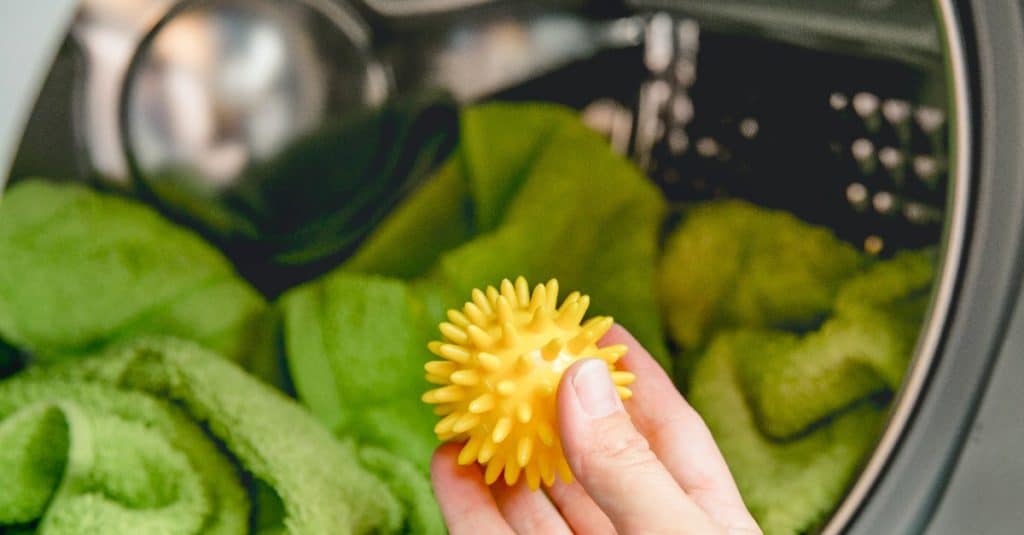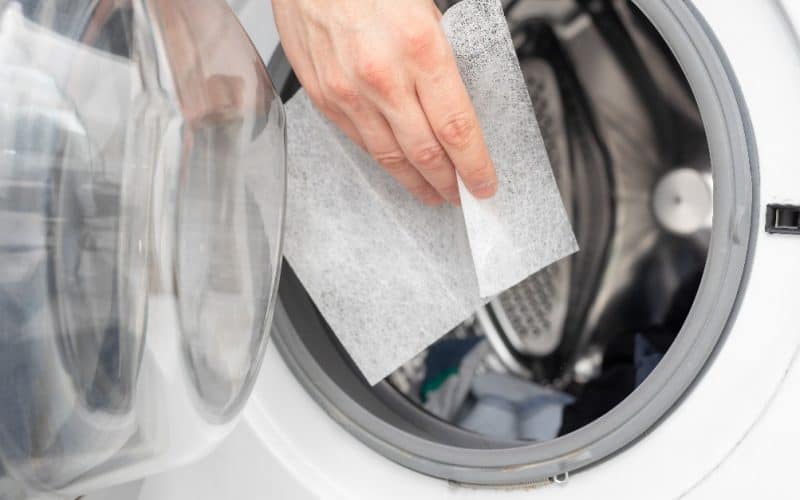A new baby brings a lot of love and joy to a family. However, along with such happiness come unique stresses and worries.
As a new parent, you want to protect your child from any harm. You scrutinize everything, from the foods they eat to the toys you buy them, to the clothes they wear.
During your research, you may discover potentially harmful chemicals are abundant in many everyday items.
For example, you’ll find there are various baby-safe laundry detergents. However, this discovery may lead you to ask yourself “can you use dryer sheets on baby clothes?”
While there is no government agency advising against the use of dryer sheets and no extensive research proving the long-term effects of dryer sheet chemical exposure, it is best to be cautious and avoid using them on your vulnerable, developing baby.
Continue reading to learn the risks of using dryer sheets and possible safe alternatives.
Things to Know
-
Can You Use Dryer Sheets on Baby Clothes?
Although there is no definitive evidence proving the long-term effects of the chemicals found in dryer sheets on developing babies, they are known to be harmful, often irritating sensitive babies’ skin.
As you ask yourself if you can use dryer sheets on baby clothes and blankets, it is important to be aware of the risks to your baby and the possible, non-toxic alternatives.
-
Risks of Using Dryer Sheets
Harmful Chemicals
Most dryer sheets contain harmful chemicals to your baby. Some of those chemicals are believed to cause eczema and asthma.
According to Scientific American, some of the most harmful components found in dryer sheets include:
- benzyl acetate – it has been linked to pancreatic cancer
- benzyl alcohol – known as an upper respiratory tract irritant
- ethanol – has been linked to central nervous system disorders
- limonene – is a known carcinogen
- chloroform – is a known neurotoxin and carcinogen
Because the chemicals and fragrances in drier sheets are meant to stay in fabrics for long periods, they may be released gradually and could potentially be absorbed directly through your baby’s skin.
Additionally, those same compounds may be toxic when ingested. This requires serious consideration, especially since babies tend to put everything in their mouths, including the clothing and blankets potentially coated with such chemicals.
Furthermore, as dryer sheets become heated during the clothes-drying process, they release chemicals that can negatively impact the air quality of your home, which can pose a respiratory health risk to every member of your household, especially your baby.
The toxic effects of sustained exposure to dryer sheet chemicals and fragrances are unknown. However, it is best to be cautious when deciding whether you can use dryer sheets on your baby’s clothes.
Baby’s Sensitive Skin
Babies have sensitive skin, which is typically more delicate than adults’ skin. In fact, according to Community Practitioner, “baby’s skin is 20% thinner than that of adults.”
As a result, common conditions, such as eczema and cradle cap can be exacerbated by the chemicals and fragrances found in dryer sheets.
Additionally, those compounds can also cause rashes, blisters, and dermatitis in babies.
If you’ve used regular detergent on your baby’s clothes and blankets and have observed no effects, you may think it safe to use regular dryer sheets on their items.
However, because babies’ skin is more vulnerable to damage, it must be treated with care. The unseen consequences of prolonged exposure to dryer sheet compounds may not be worth the risk.
Decreased Fire Resistance
It is recommended (and it is the law in some countries, such as the United States) that babies’ and children’s pajamas be tight-fitting and fire-resistant.
However, the compounds on dryer sheets can make fabrics more prone to fire. As these chemicals build up in clothing and blankets, they block any fire resistance by reducing water absorbency, which can leave garments, and ultimately your baby, vulnerable to a potential fire.
-
Alternative Options
Dryer Balls

Dryer balls can be made of wool, plastic, rubber, or aluminum foil. They separate clothes to create airflow, improve drying time, and save money in the long run.
This environmentally friendly alternative helps reduce static in clothing and can be reused many times. Each load usually takes 3-4 balls.
If opting for wool dryer balls, select ones made of natural fibers, not synthetic ones. Some wool dryer balls can be reused for up to 1,000 loads!
To use aluminum foil balls, all you must do is crumple up sheets of foil and toss them in with your laundry.
Oftentimes, people may be hesitant to move away from dryer sheets because they enjoy the fragrance left on their clothes after drying them. However, you need not sacrifice fragrance for safety if you switch to dryer balls.
If using wool dryer balls, simply add 2-3 drops of essential oil directly to each of the balls. Be sure to allow them to set for a few minutes or tumble them in the dryer before adding the wet laundry to avoid oil stains on the fabric.
If using dryer balls other than wool, you can add essential oils to a washcloth or a piece of fabric.
Carefully select essential oils with a flash point higher than the temperature of your dryer, typically above 135⁰ Fahrenheit to avoid a fire hazard. Read the labels!
Some oils that are safe to add to wool dryer balls include lavender, lemongrass, and bergamot. You may choose one essential oil or have fun by mixing different scents to create your desired fragrance.
By using essential oils, you and your baby will also benefit from their therapeutic effects, as some may ease anxiety, serve as a sleep aid, or provide antibacterial properties to the fabrics.
Reusable Sheets and Cloths
As you research whether you can use dryer sheets on baby clothes, you may find brands marketed as baby-safe.
When avoiding harmful chemicals, look for dryer sheets that are:
- fragrance-free
- chemical-free
- dye-free
- phosphate, phthalates, and parabens-free
- free of animal by-products
- hypoallergenic
While you may not find a brand that includes all of the above, the more categories you can check off, the better.
Some static eliminator cloths can be used in conjunction with dryer balls, or on their own. They are typically made of 99% polyester and 1% nylon and can be reused for up to 300 loads.
The Environmental Working Group (EWG), may prove a good resource for finding safe, healthy products and their ratings.
Vinegar and Baking Soda
As you search for safe dryer sheet alternatives, you may consider white vinegar or baking soda to soften your baby’s clothes and blankets. White vinegar also prevents static cling.
Add one-quarter of a cup of either ingredient to the rinse cycle. DO NOT mix with bleach as their chemical reaction will create undesirable fumes.
Using white vinegar or baking soda during the wash, along with dryer balls with ensure you keep your baby’s clothes soft and static, and chemical-free.
Final Thoughts
A newborn’s delicate skin is more prone to reacting to chemicals than an adult’s skin. When researching the safest, healthiest products to use for your baby, you may wonder if using dryer sheets on your baby’s clothes is safe.
Knowing the risks associated with using dryer sheets, along with some non-toxic alternatives, may help you decide the safest course of action for your baby.
